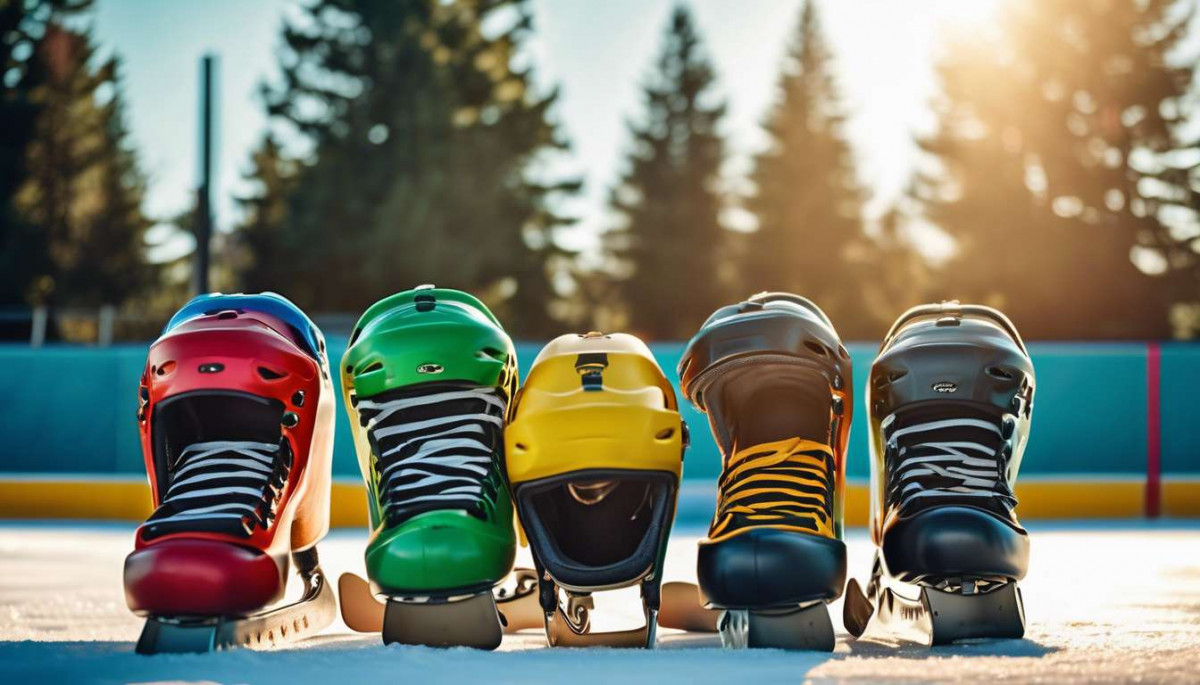The market for hockey equipment is experiencing a notable shift as prices become more accessible this summer. This trend is largely attributed to advancements in manufacturing technologies and increased competition among retailers, leading to cost-effective solutions for consumers.

The affordability of hockey gear, including skates, sticks, and protective equipment, is expected to broaden the sport’s appeal, encouraging participation from a wider demographic.
Retailers are leveraging both online and in-store platforms to offer competitive pricing. Many are introducing promotional deals and discounts to attract buyers.
Additionally, collaborations between manufacturers and retailers are driving innovation, resulting in high-quality equipment that meets the demands of both amateur and professional players.
This movement towards more affordable hockey gear not only promotes inclusivity within the sport but also supports the growth of local hockey communities.
As the summer progresses, the impact of these price reductions on consumer behavior and overall participation rates will be closely monitored by industry analysts.
For the latest deals and high-quality hockey gear, be sure to visit hockeystore.com.
Technological Advancements and Price Competition
Recent technological advancements in hockey equipment have intensified price competition among manufacturers. This evolution in the industry has led to the development of more cost-effective production techniques, enabling companies to offer high-quality gear at reduced prices.
Innovations such as enhanced materials and improved manufacturing processes contribute to driving down costs while maintaining performance standards. This trend not only benefits manufacturers but also fosters a sense of inclusivity among diverse consumer groups, as more affordable equipment becomes accessible.
Collaborations between technology firms and established hockey brands have played a significant role in this shift. By integrating cutting-edge technologies with traditional equipment designs, these innovative collaborations have broadened the range of available products.
As a result, the market has witnessed an influx of competitively priced options that cater to various skill levels and preferences. This dynamic environment encourages a broader demographic appeal, enhancing the sense of community among hockey enthusiasts who seek quality gear that aligns with their budgetary constraints.
Broadening Demographic Appeal
Affordable hockey equipment is attracting a wider range of players, from beginners to seasoned athletes, and fostering greater inclusivity in the sport.
Key Drivers:
- Technological advancements have reduced production costs, thereby lowering market prices.
- The accessibility of cost-effective gear opens the sport to diverse demographics, encouraging participation from various age groups and socio-economic backgrounds.
Impact:
- Traditional barriers to entry are dismantled.
- Cultivation of a sense of community and inclusivity within the hockey realm.
Demographic Appeal:
The appeal of hockey is further enhanced by innovative collaborations between manufacturers and community organizations.
Goals of Collaborations:
- Efficient distribution of equipment.
- Development of programs that introduce the sport to underrepresented groups.
By leveraging these collaborations, the sport is poised to reach new audiences and create a more inclusive environment.
Outcomes:
- Broadening appeal enriches the player base.
- Contributes to the sport’s growth and sustainability.
- Ensures accessibility for future generations.

Innovative Collaborations Driving Quality
Collaborations between manufacturers and community organizations are enhancing the quality of hockey equipment while maintaining affordability. These innovative partnerships harness technological advancements to produce equipment that meets diverse needs across various demographics.
By working closely with community organizations, manufacturers ensure that the equipment is accessible and appealing to a broad demographic, fostering inclusivity within the sport.
Technological advancements play a crucial role in these partnerships, allowing for the development of equipment that is both high-quality and cost-effective. Innovations in materials and production techniques contribute to a reduction in manufacturing costs, which can be passed on to consumers in the form of lower prices.
This approach not only makes hockey more accessible but also ensures that players do not have to compromise on quality.
The commitment to demographic appeal through strategic collaborations reflects a shared vision of inclusivity and affordability. As a result, the hockey community can enjoy superior equipment that supports:
- Skill development
- Safety
This reinforces a sense of belonging within the sport.